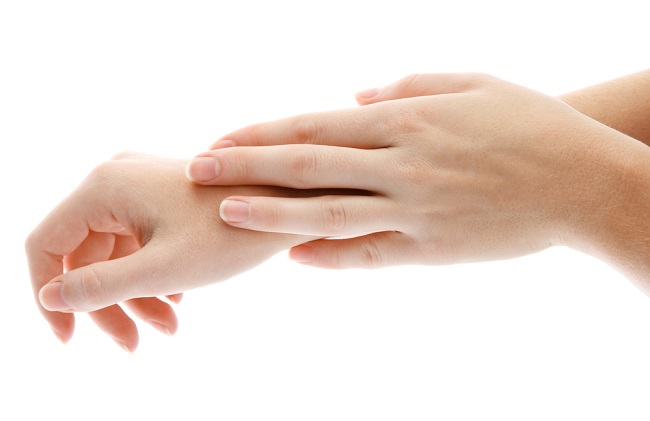Types of Skin Diseases and How to Overcome It
The causes and symptoms of skin disease vary. There is a skin disease that feels itchy or painful, there are also those that only make the skin become unsightly. Skin diseases can also be mild, can also be dangerous to potentially life threatening.
The skin is the largest organ in the body. Its function is to protect the body from bacteria, viruses, and sunlight, help regulate body temperature, feel touch and pain sensations, and produce vitamin D.

As the outermost part of the body that receives various exposures from the environment, the skin can easily experience disorders or diseases. Skin diseases can appear unexpectedly, and many people think the cause is always related to poor body hygiene. In fact, there are many factors that can cause the appearance of skin diseases.
Kinds of Skin Diseases
The following are types of skin diseases based on the cause:
(1.) Skin disease due to inflammation
Inflammation of the skin is called dermatitis. This condition occurs when the skin comes in contact with irritating substances or with allergens (substances or objects that cause allergic reactions).
Symptoms of dermatitis are generally in the form of itching, redness, and swelling. Based on the cause, there are several types of dermatitis, namely:
Irritant contact dermatitis
Irritant contact dermatitis includes the most common skin disease. This skin disease is characterized by the appearance of rashes, dry skin, irritation, or even blisters on the area of the skin in contact with irritant substances. Some examples of irritant substances are chemicals, bleach, detergent, alcohol, and bath soap.Allergic contact dermatitis
Symptoms of allergic contact dermatitis, such as redness and swelling, appear when the skin comes in contact with allergens. Allergens can be chemicals, cosmetics, nail polish, latex gloves, protein, or jewelry.
In normal people, coming into contact with these allergens will not cause an allergic reaction. But in allergy sufferers, contact with allergens will cause symptoms of dermatitis.Atopic dermatitis (eczema)
Eczema is characterized by red, itchy, dry, or scaly skin. This complaint often appears on the skin in the neck, elbow folds, or the back of the knee. If scratched, scaly skin can peel out liquid.
Long-term (chronic) skin disease that usually starts when this baby, often relapsing suddenly and then subside.Seborrheic dermatitis
This skin disease usually affects oily areas of the body, such as the face, back, and chest. The symptoms are reddish and scaly skin. When it comes to the scalp, seborrheic dermatitis causes stubborn dandruff. In infants, this skin disease is known as a cradle cap.
(2.) Skin diseases due to autoimmune disorders
Autoimmune disorders occur when the body's immune system attacks and destroys healthy body tissues. Some skin diseases caused by autoimmune disorders are:
Psoriasis
Psoriasis is a condition in which skin cells grow too fast, so they accumulate and form reddish spots with silver scales.Vitiligo
Vitiligo occurs when skin cells that produce melanin (dark pigment) do not function. As a result, the skin loses its color and white spots appear. Vitiligo can be suffered by all skin types, but it will be seen more clearly in people with dark skin.Scleroderma
In scleroderma, the skin becomes hard and thickens. Scleroderma can only attack the skin, but can also attack blood vessels and internal organs.Pemphigus
There are two types of pemphigus, namely pemphigus vulgaris and pemfigus foliaceus. Pemphigus vulgaris is characterized by blisters that break easily but do not itch. Whereas pemfigus foliaceus is characterized by scaly or crusty skin, and small blisters that itch if broken.Discoid lupus erythematosus
This is lupus that attacks the skin. Symptoms of discoid lupus erythematosus include a severe rash that tends to worsen when exposed to sunlight. Rashes can appear anywhere on the body, but more often appear on the scalp, face, neck, hands and feet.
(3.) Infection due to skin disease
Skin infections due to this infection are generally contagious. and can be caused by:
Bacterial infection
Some skin diseases caused by bacterial infections include boils, impetigo, leprosy, folliculitis (infection of the hair glands), and cellulitis.Viral infection
Smallpox, herpes zoster or snakepox, warts, molluscum contagiosum, and measles are skin diseases caused by viruses.Fungal infections
Mushrooms usually attack the part of the skin that is often moist. Various types of skin diseases due to fungal infections are ringworm, tineacruris (fungal infection in the groin), fungus, and water lice (fungal infections of the feet).Parasitic infections
Parasites, such as lice and mites, are a type of parasite that often causes skin diseases, namely scabies. In addition to these two types of parasites, worm infections can also cause skin diseases.
In addition to the various skin diseases mentioned above, there are also deadly skin diseases, namely skin cancer. Skin cancer is caused by the growth of malignant cells in the skin. There are several types of skin cancer, namely melanoma, actinic keratosis, basal cell carcinoma, and squamous cell carcinoma.
Overcoming and Preventing Skin Disease
Treatment of various types of skin diseases depends on the type and cause. There are skin diseases that can heal on their own, and there are also those that have to be treated medically, ranging from giving ointments to surgery.
The following are some types of treatment that are often used to treat skin diseases:
1.) Corticosteroids
This drug is used to reduce the body's overactive response. Ointment corticosteroids or drinking tablets are usually used to treat skin diseases due to inflammation, such as dermatitis or autoimmune disorders.
2.) Antihistamines
Antihistamines are drugs used to relieve allergic reactions and itching on the skin. This medicine can be purchased alone at a pharmacy or through a doctor's prescription.
3.) Antibiotics
Ointment antibiotics are given to treat skin diseases due to bacterial infections. In extensive infections, doctors will give antibiotics in the form of tablets or capsules taken. Consumption of antibiotics must be based on a doctor's prescription and must be spent.
4.) Antiviral drugs
Giving antiviral drugs aims to reduce symptoms and eradicate viruses that cause skin diseases.
5.) Antifungal drugs
Antifungal drugs to treat skin diseases due to fungal infections are mostly in the form of topical drugs. However, sometimes doctors will also prescribe antifungal drugs to drink.
6.) Operation
Surgery can be done to treat skin cancer or other skin diseases, such as warts.
In addition to treatment, prevention also needs to be done, so that skin diseases do not recur and not spread to other people. The following are some steps to prevent skin diseases that can be done:
Maintain personal hygiene by bathing every day. When taking a bath, it is recommended to use a soft soap.
Avoid physical contact with people with infectious skin diseases.
Do not share the use of personal items, such as towels or clothing, with people with skin diseases.
Apply the skin paste regularly to prevent it from drying out, itching or irritation.
Avoid the habit of scratching the skin and breaking boils or blisters that appear on the skin.
Various types of skin diseases require different treatment according to the cause. If you experience complaints about the skin, don't hesitate to go to a dermatologist to get the right examination and treatment.









Comments